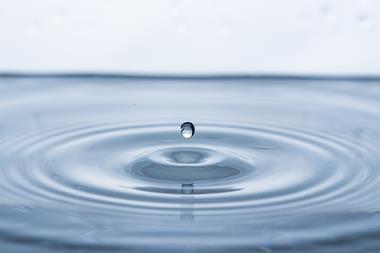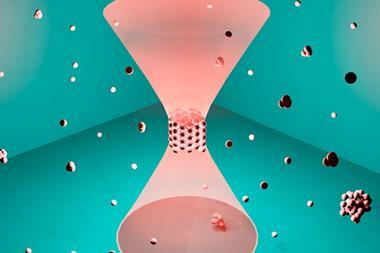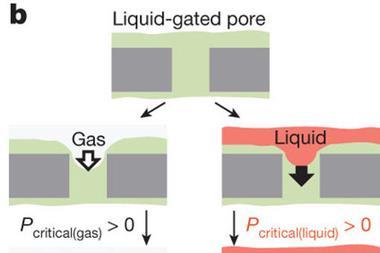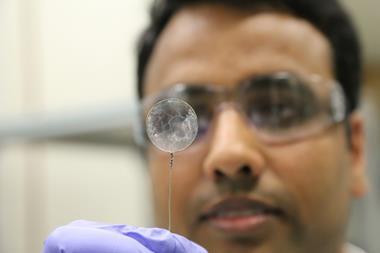Oil and water don’t mix. But separating them quickly is no easy task. Now, researchers in Canada and China have come up with two different approaches that not only achieve rapid separation, but could also cut costs.
Aside from cleaning up oil slicks, efficient separation of oil and water would be useful for the pharmaceutical industry and in oil extraction and petrochemical production. Hence, novel methods that allow more environmentally friendly separations are always on demand.
The team led by Guojun Liu at Queen’s University in Kingston, Canada, succeeded in separating oil and water using a bifunctional ‘Janus’ fabric.1 ‘Our fabric is really unique,’ says Liu. ‘Traditionally these kind of syntheses require a big number of steps and chemical reactions. Instead, we just soak the fabric in a coating solution, let it dry, and then it’s done!’ Traditional Janus fabrics are not able to discriminate tiny droplets in emulsions. However, Liu’s team found a solution. ‘Our fabric does two jobs: de-emulsification and separation,’ he explains. Liu’s membrane not only separates oil and water mixtures, but also favours the aggregation of oil droplets, which ultimately destroys the emulsion. This has attracted the interest of investors. ‘We patented the technology, and now quite a few companies are interested in our fabric,’ Liu says.
Yanlei Hu, Dong Wu and their team at the University of Science and Technology of China took a completely different approach to the same problem. They precisely designed a micrometric aluminium strainer using femtosecond laser pulses.2 ‘Because water and oil droplets form totally different contact angles with the microscopic pores, water can easily permeate the foil by gravity, whereas the oil is rejected and remains retained,’ explains Hu. Laser technology allows the Chinese team to prepare homogeneous filters in a controlled manner without generating chemical residues. ‘Aluminium foil is very low cost, and thanks to the flexibility of femtosecond laser fabrication we can create personalised patterns simply and quickly,’ he says.
Both methods efficiently separate light oils and heavy oils from water.
Darrell Patterson, director of the centre for advanced separations engineering at the University of Bath, UK, highlights how ‘these papers provide two new simple methods that enable enhanced oil-water separations’. As an engineer, he finds it even more significant that ‘both methods are potentially scalable to produce new membranes […] that can meet the growing separation needs of industry and society, with lower cost, lower energy [requirements] and greater selectivity’. Patterson says that studying the ageing, fouling and environmental impact of membranes could be a clever way to continue these investigations. He adds that ‘both are elegant pieces of excellent science that produced useful, advanced materials’.
References
1 Z Wang, G Liu and S Huang, Angew. Chem. Int. Ed., 2016, DOI: 10.1002/anie.201607581
2 G Li, J et al, Mater. Chem. A, 2016, DOI: 10.1039/C6TA08231A (This article is free to access until 4 January 2017)


























No comments yet